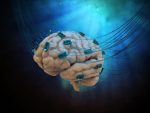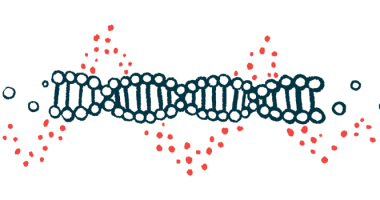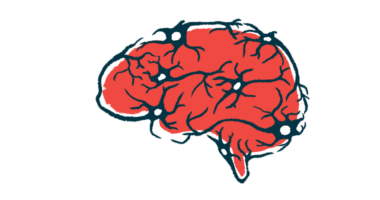2 Northwestern Researchers Awarded $17.9M in ASAP Grants

Scientists from Northwestern University will use two grants — totaling $17.9 million — from the Aligning Science Across Parkinson’s (ASAP) initiative to study alterations in the brain that contribute to the development of Parkinson’s disease.
Their research focuses on brain circuits, the specific populations of interconnected brain cells that carry out functions together, and how particular circuits may be affected in Parkinson’s.
Both ASAP grants — one for D. James Surmeier, PhD, chair of neuroscience at Northwestern’s Feinberg School of Medicine, in Chicago, and his team, and one for Rajeshwar Awatramani, PhD, professor of neurology at Feinberg, and his group — will be implemented over the next three years by ASAP’s partner, The Michael J. Fox Foundation, the university said in a press release.
A program of the ASAP initiative, the ASAP Collaborative Research Network awarded the grants to the two researchers and their multi-institution, multidisciplinary teams as the culmination of a yearlong competition, Northwestern said.
Surmeier will receive $9 million over three years for his project, “Distributed circuit dysfunction underlying motor and sleep deficits in a progressive mouse model of Parkinson’s disease.” It will investigate how brain dysfunction in Parkinson’s may begin in particular brain circuits, and how these impairments can then progress into the motor and sleeping challenges experienced by patients.
The goal, according to Surmeier, is to diagnose Parkinson’s earlier in the disease process, and increase the chances of preventing its progression.
As principal investigator, Surmeier will collaborate with a multi-institutional team that includes Rui Costa, PhD, associate director and CEO of Columbia University’s Mortimer B. Zuckerman Mind Brain Behavior Institute, in New York; Yang Dan, PhD, a neurobiology professor at University of California, Berkeley; Silvia Arber, PhD, of the National Academy of Sciences and a researcher at the University of Basel, in Switzerland; Jun Ding, PhD, a professor of neurosurgery and neurology at Stanford University, in California; and Ann Kennedy, PhD, also a professor at Northwestern’s Feinberg School of Medicine.
Additionally, Surmeier hopes this work will allow for better treatments with various medication- and gene-based therapies once Parkinson’s does appear.
“Identifying the deficits in brain function that are happening early in Parkinson’s disease should help us develop assays that will lead to earlier clinical diagnosis,” Surmeier said.
“Earlier clinical diagnosis will maximize the impact of disease-modifying therapies,” he said, noting that there currently are none proven to work in later stage Parkinson’s disease.
Surmeier believes that, by connecting the alterations in brain activity with the behavioral changes seen as Parkinson’s progresses, scientists will be able to determine the roles played by specific circuits within the clinical manifestations of the disease. That would potentially allow for more targeted therapies, he said.
“By understanding the cascade of events underlying the emergence of clinical Parkinsonism, we may be able to develop new interventions that stop disease progression. It may be that as the disease evolves, before clinical diagnosis, that the activity in brain circuits begins to actually accelerate the loss of dopaminergic neurons [nerve cells],” Surmeier said.
“If this is the case, then correcting the activity of these circuits may slow or stop progression, significantly prolonging the period of time in which current symptomatic therapies are effective,” he said.
Parkinson’s is characterized by the death and dysfunction of neurons (nerve cells) in a part of the brain called the substantia nigra. Specifically, dopaminergic neurons — a type of neuron that communicates with other nerve cells by releasing a signaling molecule called dopamine — is gradually lost.
Awatramani and his team have been awarded $8.9 million to study how dopamine-producing brain cells in the substantia nigra are affected in Parkinson’s.
The project, “Redefining PD pathophysiology mechanisms in the context of heterogeneous substantia nigra neuron subtypes,” will attempt to characterize how particular subsets of dopamine-producing nerve cells may contribute to movement and coordination — and how they are impacted in Parkinson’s disease.
“Our work will identify which dopamine neuron subtypes degenerate and which circuits are dysregulated,” Awatramani said.
“This knowledge will be important for understanding and optimizing therapies, such as deep brain stimulation, that are aimed at restoring normal circuit function,” he said.
His team includes Northwestern professors Loukia Parisiadou, PhD, a pharmacology researcher, Daniel Dombeck, PhD, a neuroscientist, Mark Bevan, PhD, also a neuroscientist, and Surmeier, as well as Tom Hnasko, PhD, of the National Academy of Scientists and a professor at University of California, San Diego.
With the use of a mouse model of Parkinson’s, Awatramani’s group also hopes to identify which subtypes of brain cells, and which circuits, are disrupted when the LRRK2 gene is mutated. Mutations in the LRRK2 gene are one of the most common genetic causes of Parkinson’s. This information may allow for better optimization of LRRK2 inhibitors and their use in patients.
Through its grants program, ASAP supports multidisciplinary and multi-institution research teams seeking to address key knowledge gaps in understanding the development and progression of Parkinson’s disease.
“These two awards, given after a yearlong international competition, are a major coup for the University and the interdisciplinary collaborations fueling our leading-edge discoveries in neuroscience,” said Eric G. Neilson, MD, vice president for medical affairs and Lewis Landsberg Dean at Northwestern.
“These grants recognize the outstanding work being done across many unique spaces to advance our understanding of Parkinson’s disease,” he said.








